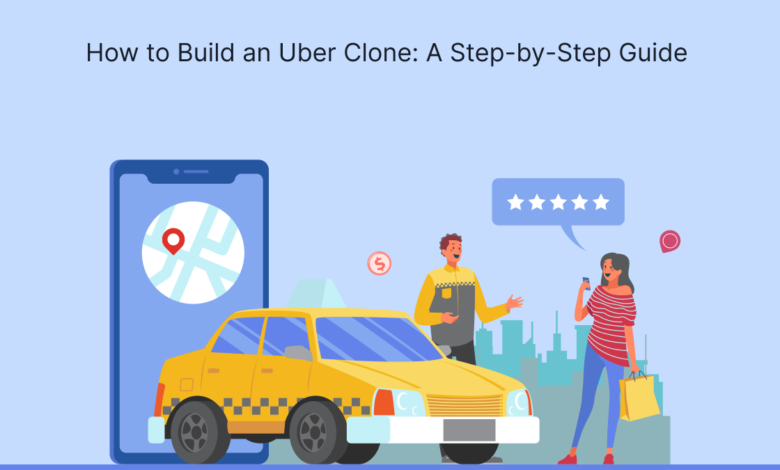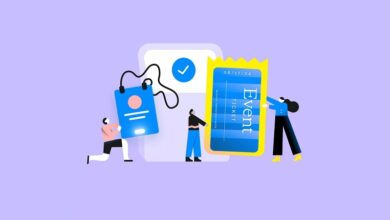How to Build Your Own Uber Clone: A Step-by-Step Guide

The ride-hailing business has experienced an explosion in the last few times, with companies like Uber being the most prominent. As more and more people seek easy ways to travel, making your own Uber clone app could be a wise business decision. This step-by-step guide will walk all the steps of creating your own Uber clone app, starting with studying the market and planning your features to designing the app and then launching it. If you follow the right strategy you can develop an app that is able to meet the requirements of passengers and drivers, assisting to make your mark in the booming ride-hailing industry.
Why Build an Uber Clone?
Before we get into the details of the technology, consider why constructing an Uber clone app is a good idea.
Proven business model: By Uber clone it is possible to leverage the success of this model and provide the same service to customers in your area.
Cost-effective: A clone application lets you skip most of the hurdles to development and begin sooner, thus saving money during the process.
Step 1: Define App’s Features
Passenger App Features
User Registration/Login: Allow the user to sign up using an email address, phone number, or account on social media.
Ride Histories: Passengers are capable of examining their previous trips and receipts.
Review and Ratings: After your ride you are able to give a rating to the driver and offer feedback.
Driver App Features
Driver Registration/Login: Allow drivers to sign up and submit documents such as licenses and details about their vehicle.
Ride Accept/Reject: The drivers are able to accept or deny ride requests.
Navigation: The service provides real-time maps and GPS that can direct drivers to the location of passengers and their destinations.
Earnings Tracker for Drivers: They have the ability to keep an eye on their earnings as well as view detailed reports of their rides.
Evaluation and Feedback: Drivers may also rate their passengers by their conduct.
Admin Panel Features
Dashboard: A complete view of all activities taking place on the platform, such as rides, payments, and user activities.
Managers of Drivers and Users: Administrators are able to manage both passengers and drivers, as well as verify their information and settle disputes.
Trip Management: Administrators are able to keep track of all completed and ongoing rides.
Revenue Management Administration Panel: This panel assists admins in keeping track of the payment processing, commissions, and also payouts.
Push Notifications: Push important notifications to passengers, drivers, or administrators for information about payments, rides, etc.
Step 2: Choose the Right Tech Stack
When you have identified the features you’d like to have for your app, The next step is to choose your technology stack. This includes the programming languages, tools and platforms you’ll develop your app on. The most common stacks of tech utilized to create an Uber clone are:
Frontend (Passenger and Driver Applications): Use Flutter or React Native to enable cross-platform development. This will ensure that your app runs simultaneously on iOS in addition to Android.
Backend: Node.js and Ruby on Rails to speed up and scale development.
Databases: MongoDB or PostgreSQL for storage of data such as the details of rides, user profiles, and the history of payments.
Real-Time Communication: WebSockets allow for updates in real-time, like ride requests or GPS tracking.
Payment Gateway Integration: Stripe or PayPal for safe and simple payments.
The right technology stack is essential for the application’s performance, scalability, and usability. Be sure to speak with an expert in the field or development company to determine the right technology stack that meets your needs.
Step 3: Design the User Interface (UI)
A well-designed design for the user interface (UI) can be the key to how successful your Uber clone app is. It should have a design that is clear and simple to use. The goal is to make sure that the driver and passengers have an enjoyable and seamless experience.
Passenger App UI User Interface: The UI should facilitate the booking of rides using a minimum of steps. An interface that maps the driver, ride summary, and payment process must be simple and easy to use.
Driver app UI for Drivers: Drivers need to be capable of deciding whether or not to accept rides in a short time. The UI must also provide simple-to-read directions as well as important details such as ride duration and cost.
Dashboard for Admins: This dashboard for admins must present information in a clear and easy-to-read format and provide quick access to statistics and reports.
Step 4: Develop the App
The technical work begins. Depending on the experience you have or your expertise, you may choose to hire an in-house development team or partner with an agency that specializes in the development of Uber applications that clone Uber. If you choose to employ an entire team, make sure they are proficient in the creation of robust features, secure, and secure applications.
Here are the stages involved in developing apps:
Backend Development: Configure your database and APIs and server-side logic to handle payment requests, ride requests, and real-time communications.
Frontend Development: Create the user interfaces of both the driver and passenger apps, making sure that they’re responsive and simple to use.
Testing: Conduct extensive testing to find and fix any bugs.
Step 5: Integrate Payment Gateway
It should be safe and reliable. The payment system must also manage tips, commissions, and refunds effectively.
Step 6: Launch and Market Your App
After your app has been developed and deployed, the next step is to launch it and market it to your intended users. In order to make your launch successful, think about these strategies:
Launch Campaigns: Offer promotions or discounts for users who are early to encourage downloads and boost engagement.
Conclusion
Developing your own Uber clone is a profitable venture. But it takes careful planning, the best technology, and a focus on the user experience. Leveraging on-demand app development services can help you build a seamless and efficient app tailored to your business needs, ensuring a smooth and successful launch. By implementing the appropriate features and strategies, your Uber clone can be an option that is popular with both drivers and passengers.





